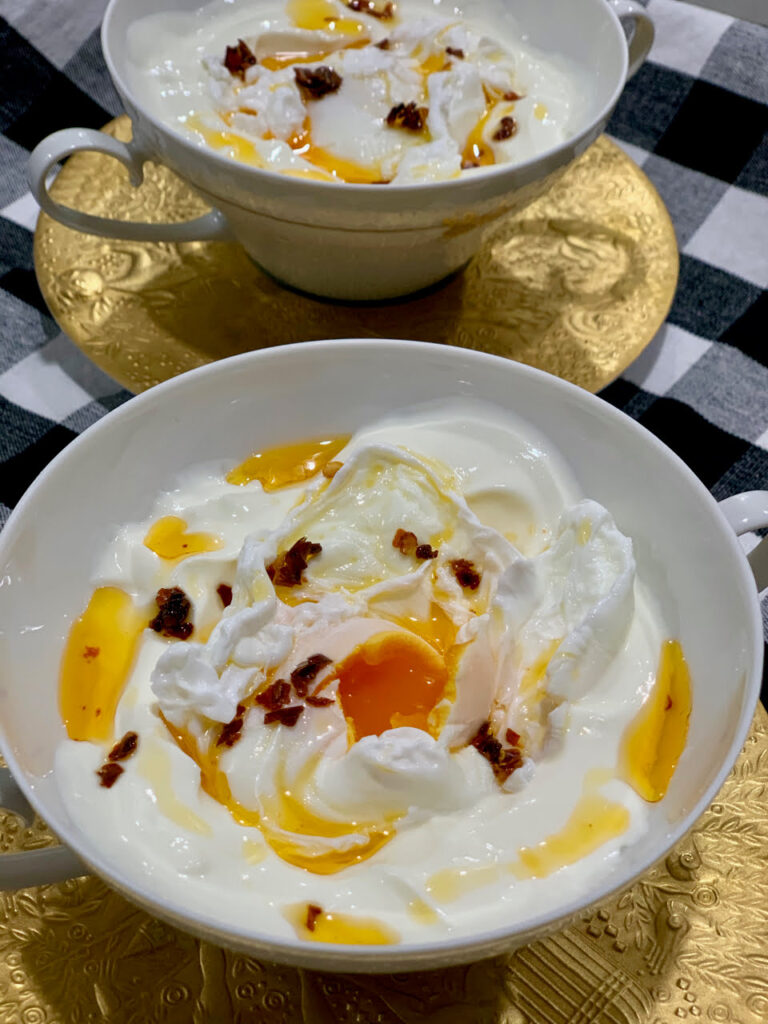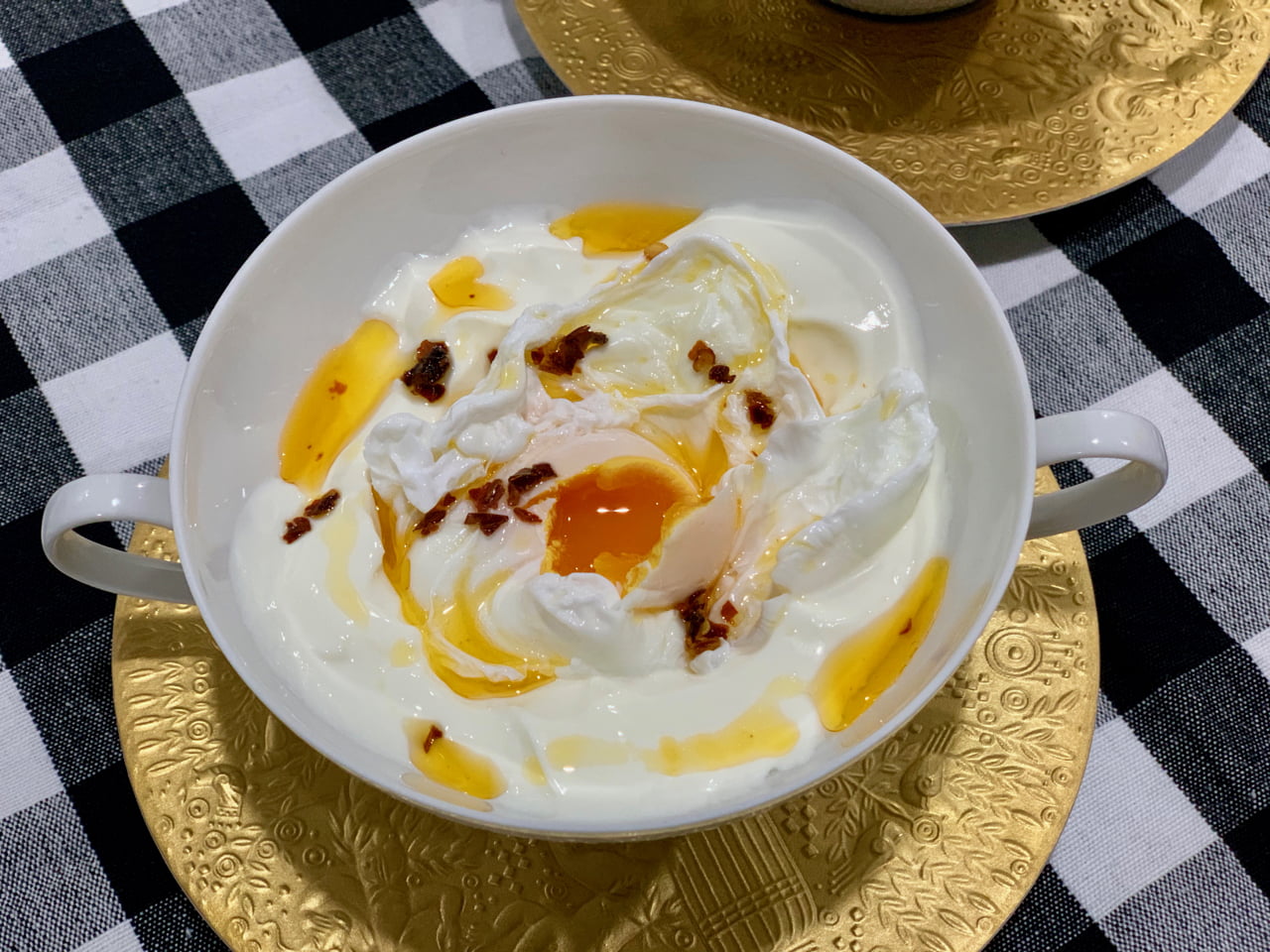Cilbir – Perfectly Poached Turkish Eggs Over Garlicky Yogurt, with Aleppo pepper flakes and your best olive oil.
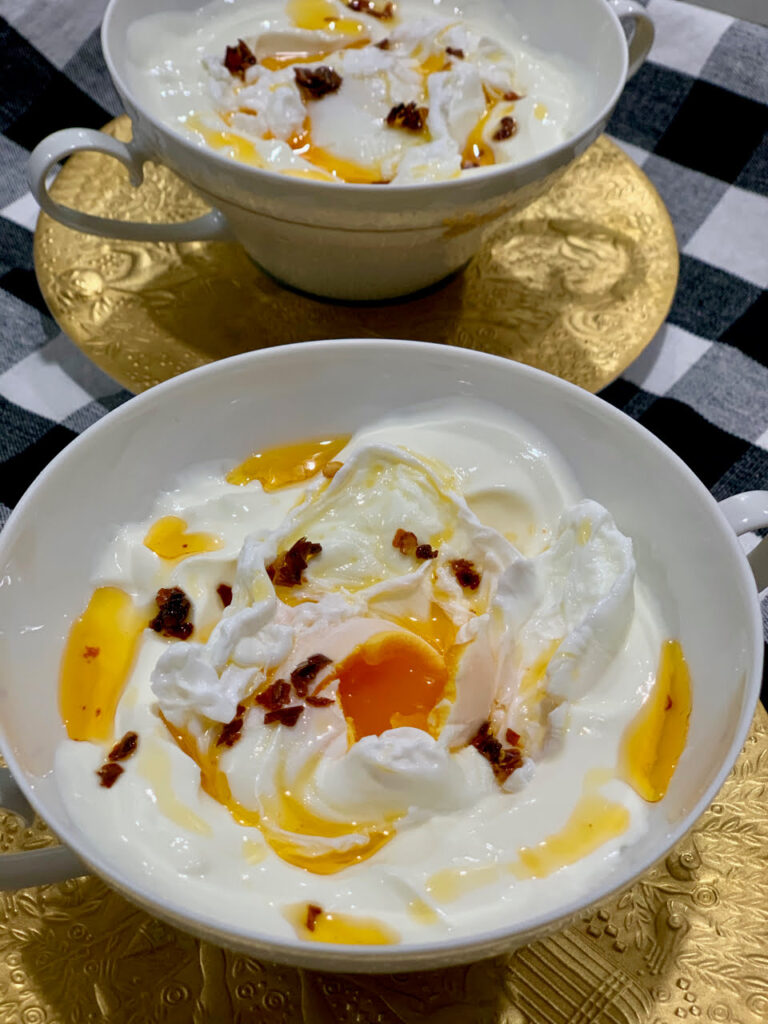
A Classic Turkish Eggs Recipe
This Mediterranean style of cooking and serving eggs, dates back to the time of the Ottomans, known as Cilbir.
As Turkish cuisine goes, this protein and flavor rich dish, is known throughout the Middle East as a delicious Turkish breakfast.
While there are various dishes you can serve alongside Cilbir, no other suits it more perfectly than Simit.
This traditional Turkish sesame bread is perfect or dipping into the center of the perfectly poached egg yolk.
Cilbir Is Ancient – Yet So Very Modern
Dating back to the time of the Ottoman Empire, a time in history known for its many contributions to the world of art and culture, I found this dish as artistically beautiful as delicious.
It seemed only fitting that I serve Cilbir in a plate adorned with gold, at a meze spread with other Turkish and Middle Eastern dishes.
Cilbir is traditionally served as a breakfast meal.
Having come, not from Turkish decent but rather Syrian, I have always enjoyed the style of dining known as Meze; a table spread of many small plates.
Serving cilbir in small individual plates makes it easy for each guest to enjoy its simplicity.
Cilbir and Mediterranean Meze
Besides meze dining being fit for an Ottoman Sultan, it is also the perfect style of dining for us Americans too; a spread with one’s favorite dishes.
Basically, meze is a way cooks or chefs can best show-off their refined style of cooking, through a vast variety of favorite dishes.
Equally similar to a meze spread is a tapas spread, which is a style from Spain, mezethakia from Greece or Izakaya from Japan.
Indeed Cilbir makes for the perfect protein dish to serve on a Meze spread, for a variety of reasons:
- It won’t be necessary to serve a meat or fish dish
- Cilbir is perfect for dipping a homemade bread in
- Let’s face it, eggs just look beautiful on a spread of food, with no competition, in looks, from other dishes
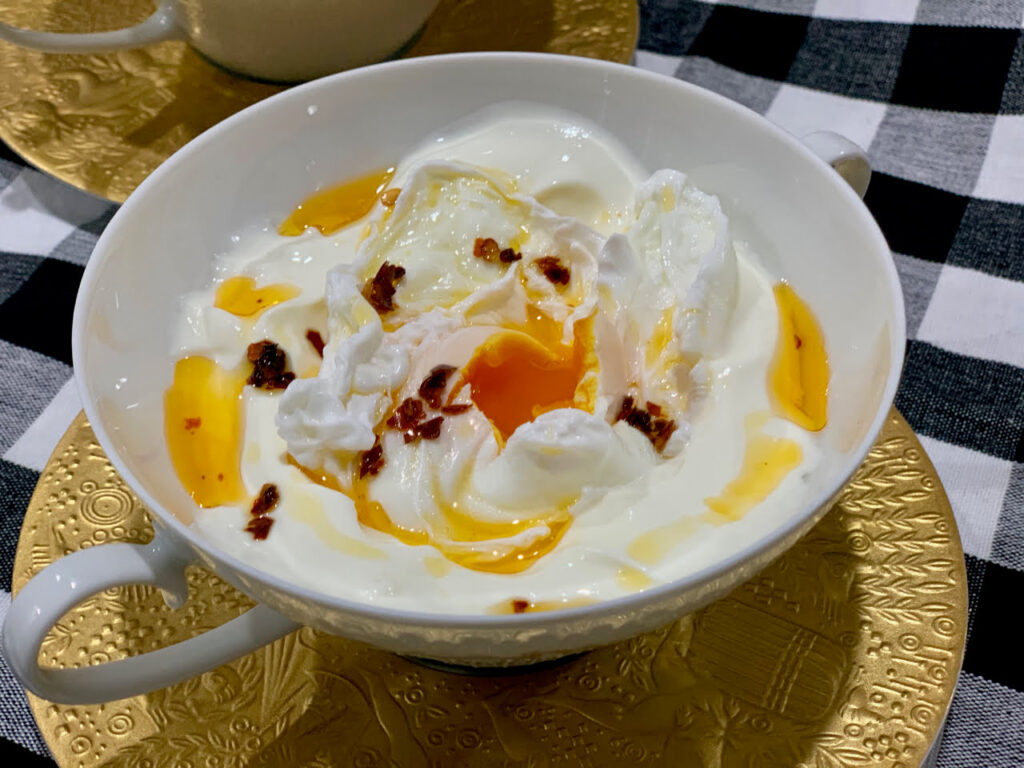
Middle Eastern Turkish Yogurt
While here in America, it seems that Greek yogurt is the only yogurt that has become known for its dense and lush texture.
But I’m telling you, there are other parts of the world that make yogurt the same, if not better!
I know, because my Syrian mom taught me how to make it.
Since a garlic yogurt base is what our perfectly cooked egg will sit proud on, we want the yogurt to be the best.
Homemade Mediterranean Yogurt
Homemade Mediterranean yogurt has been around since 5,000 BC and has its origin in Turkey.
The word comes from the Turkish root, Yog, meaning ‘condense or intensify’.
Back in the 1600’s the Turks did not consume milk unless it was sour, which they called ‘yoghurd’.
Have you ever made your own yogurt?
It couldn’t be easier, the only trick is finding a store bought yogurt with live culture to start your own batch.
- In a large pot, boil milk and cool it to a temperature you can hold your finger in and count to 10
- Next, add the rowbee, Syrian word for a starter
- Cover and leave in a warm (not hot), place overnight
- The next morning, place it in the fridge and in a few hours it is beautifully firm yogurt, without thickener, or other artificial means
Kind of like making sourdough bread, in which starter is saved and continued to use in the next batch.
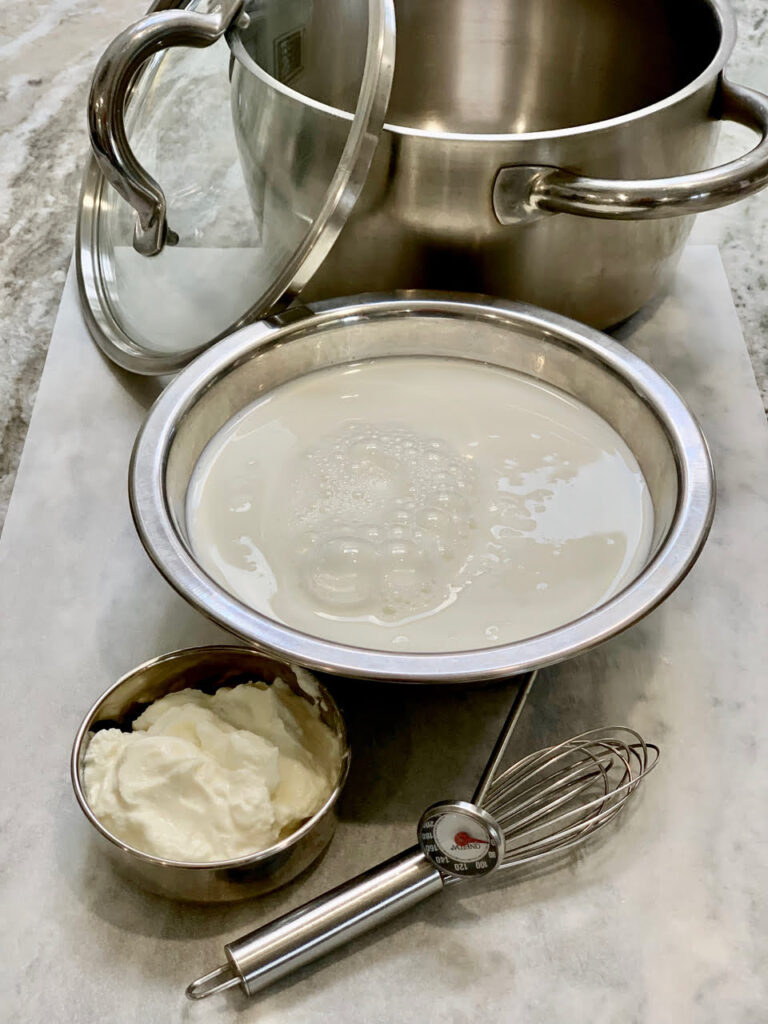
Yogurt For Cilbir
This creamy, luscious, soothing, milky fermented bacteria has been around for longer than it has been documented.
While here in America we know yogurt that is primarily made from cow’s milk, yogurt for cilbir is usually sheep, goat, and even camel milk.
The Yogurt from my childhood was not sugary, not frozen, not a dessert. Instead, this type of yogurt is the staple in many savory meals, sauces, soups, cheese, drinks, or eaten alone.
An aid to the body’s immune system, by incorporating healthy bacteria into the intestines, makes yogurt a preventative health aid.
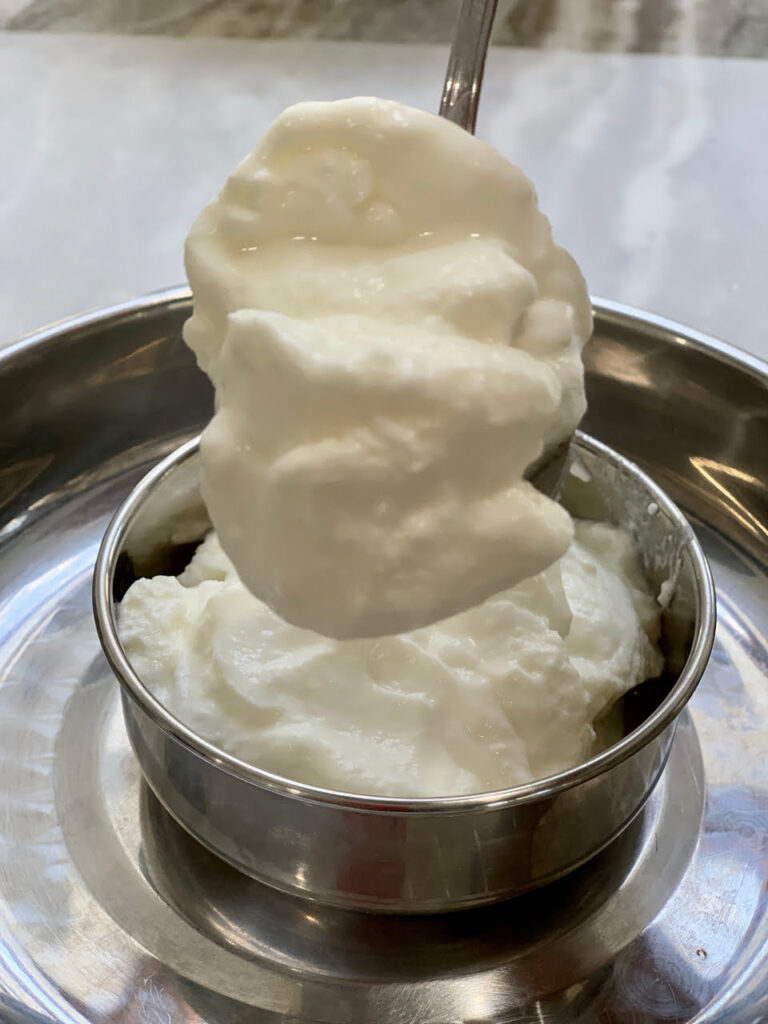
If it was ever served sweet, it was a rare treat for breakfast in which honey, real honey, cinnamon and pistachios were added.
Mediterranean Garlic Yogurt
Yogurt, in my Mediterranean home, was always served with meat. It was sometimes a sauce with garlic, herbs even raw vegetables, but it was there as an aid to the digestion of meat.
Tzatziki, is a savory yogurt dish which is the basis for many Middle Eastern and Greek sauces served on top of meat or on the side as a salad.
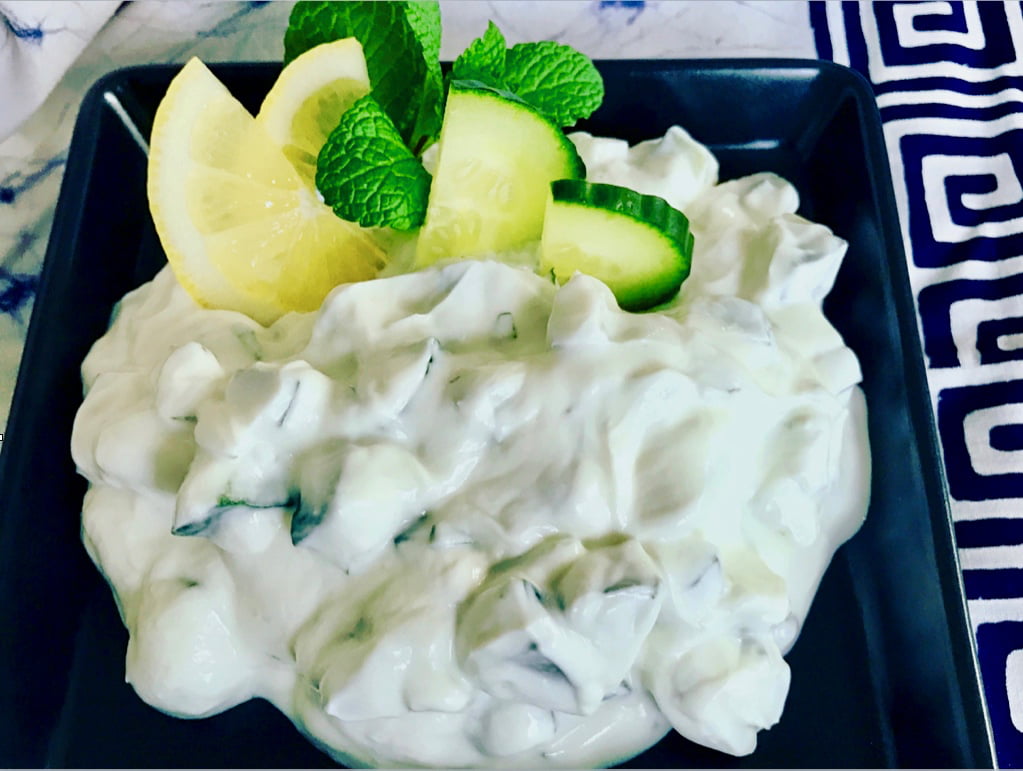
Garlic yogurt is the basis for Cilbir, this lovely Turkish inspired poached egg dish. The cloud of eggs sits on top of the intensely flavored garlic yogurt.
Generous drizzles of the best olive oil you can come by, topped with a sprinkle of Aleppo pepper. Aleppo pepper is a little sweet, somewhat hot and also smokey.
A beautiful trio of flavors for this, seemingly, delicate looking dish.
Perfectly Poached Eggs
However, for the Perfectly Poached Egg, we need a bit more finesse.
Timing is everything, as we seek to get the liquidy part of the egg whites, to form a Cloud around the yolks and still leave the yolks runny.
Ever wonder how a restaurant kitchen, with so much going on, can perfectly poach lots of eggs at one time?
My son Omar Daumit, is a professional chef. I don’t know why it took me so long to ask him to teach me how to ‘professionally’ poach an egg. Then one day, I did.
Well, I’ve dedicated an entire step-by-step post for this, so head on over here and in minutes, you will know how to perfectly poach an egg.
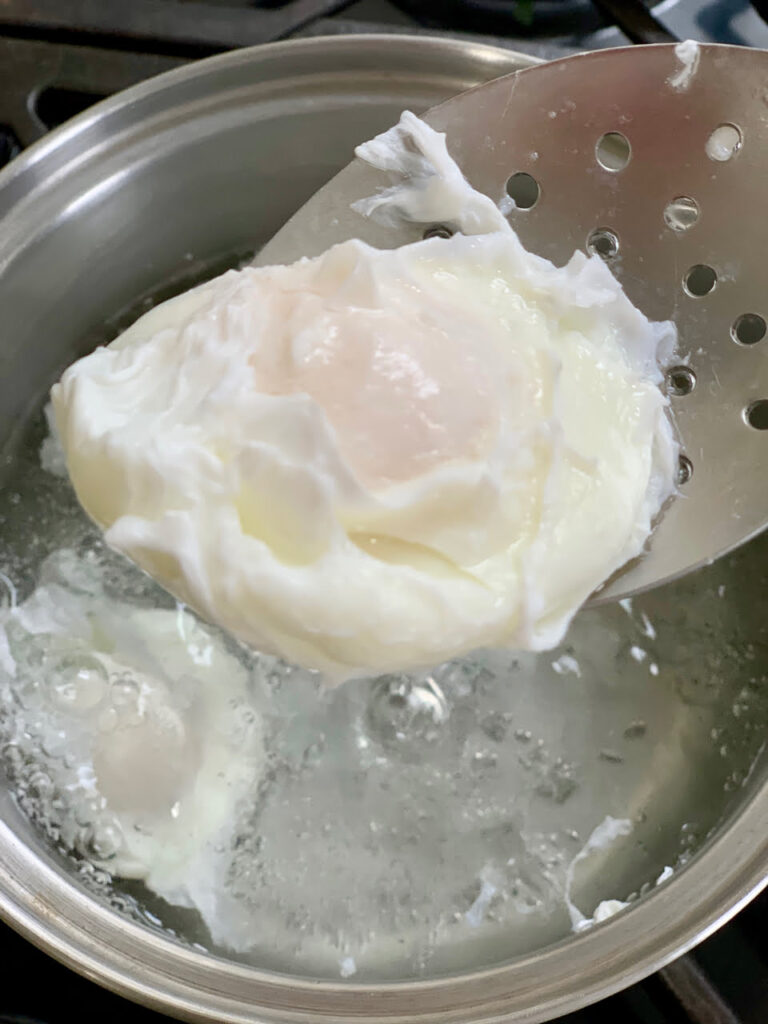
Ingredients Needed
- Lebneh or thick yogurt
- Garlic
- Salt
- Eggs
- Olive oil
- Aleppo pepper
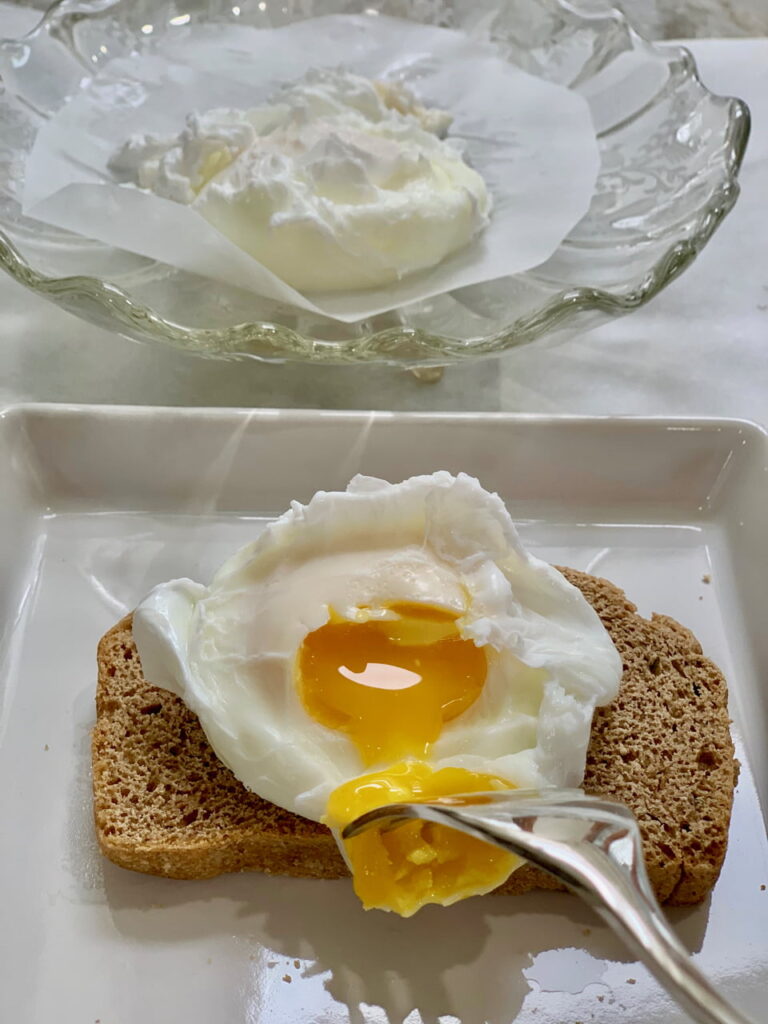
Equipment Needed
- Mixing bowl
- Garlic press
- Measuring cup
- Measuring spoons
- Boiling pot
- Slotted spoon
- Stovetop or burner
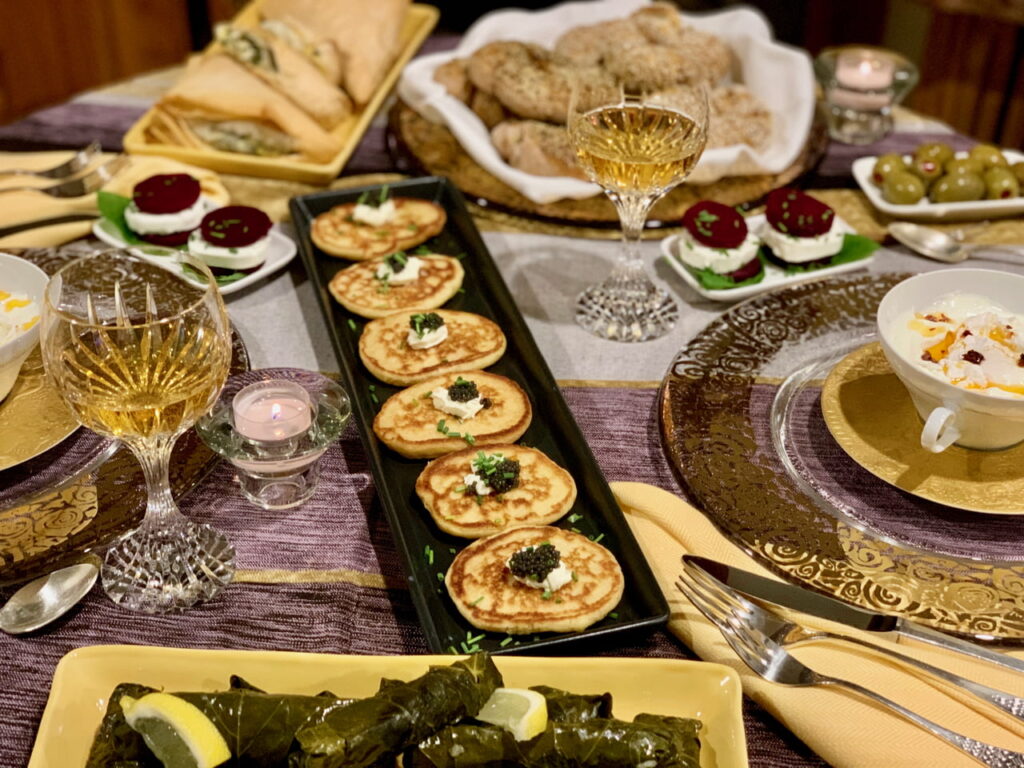
Cilbir – Perfectly Poached Turkish Eggs Over Yogurt
Equipment
- Saucepan
- 2 Serving bowls
Ingredients
- 1 cup Thick Yogurt – Lebneh or homemade, room temperature
- 1 Garlic clove crushed
- pinch Sea Salt
- 2 Fresh Eggs
- 1 tsp White vinegar
- 2 tbsp Extra virgin olive oil
- 1 tsp Aleppo pepper or red pepper flakes
Instructions
- In a small mixing bowl, combine the room-temperature yogurt and garlic. A pinch of salt, whisk, taste and add more salt if it suits you. Transfer the yogurt to the two serving dishes, preferably shallow bowls. Set aside.
- The poached eggs can be made at this time, following a familiar technique of your choice, or this restaurant style of cooking a soft poached egg.
- Bring a medium saucepan full of water to a boil. Stir the vinegar into the boiling water. Gently open the first egg into the simmering water and with a slotted spoon, gather the loose egg whites close to the yolks, while stirring the water around it, keeping motion in the water. Do the same with the second egg and allow to cook for 2-3 minutes. Remove and set on a plate lined with a paper towel or parchment paper.
- In a small pan, warm the olive oil and Aleppo pepper.
- Transfer the poached eggs to the prepared yogurt bowls, place the poached egg in the middle and drizzle the heated oil across the top.
Video
